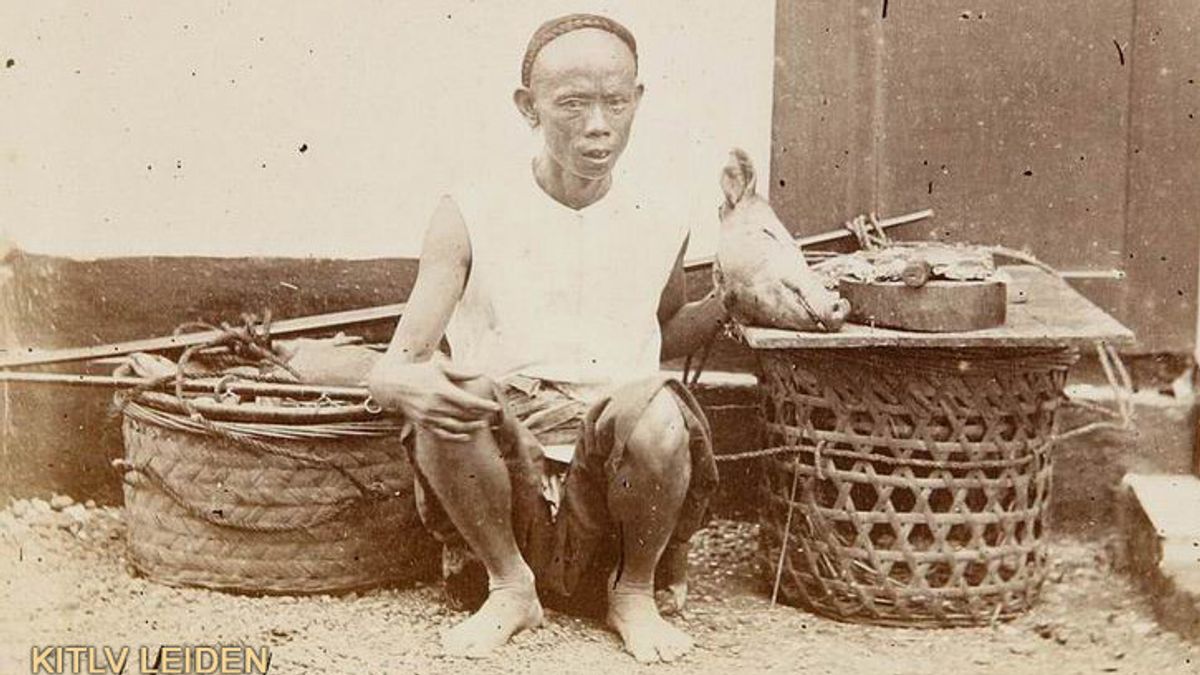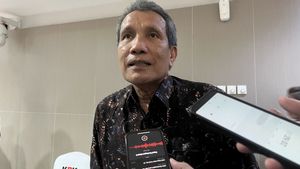
JAKARTA - The influence of ethnic Chinese in Batavia (Jakarta) is so great. His footsteps then cultivated in the land of Betawi. In addition to language, the most visceral influence of ethnic Chinese is in the culinary world. Roast pork, one of them.
Importantly, the Dutch could barely live without the presence of ethnic Chinese. For the Dutch, the Chinese were the economic drivers in Batavia. They can transform into anything -- from carpenters to merchants.
Their caste is even higher than the bumiputra. When Jayakarta was conquered by the Governor-General of the VOC who served twice --1619-1623 and 1627-1629— Jan Pieterszoon Coen in 1619, Jayakarta was renamed Batavia.
Afterwards, the company issued an announcement ordering all bumiputra to leave Batavia immediately. Meanwhile, ethnic Chinese, by Coen were asked to stay in Batavia.
They later became special citizens. Coen has promised to punish anyone -- who is unfair to them.
Coen is not overreacting. The Governor-General understood very well that the Chinese were so useful to the Dutch.
The Chinese could not only meet the daily needs of Batavia. Their work in building fortifications and buildings in Batavia made the Chinese very valuable inhabitants.
As a result, the number of Chinese in Batavia continued to increase. This condition is also supported by lasting poverty in Banten. Therefore, Batavia became the most sensible option to continue living.
"On 7 November 1619 there were between 300 and 400 Chinese in Batavia. on 31 July 1620 the number became 800 people out of a total population of 2,000. On 26 October 1623 it was 850 to 900 people. At the beginning of batavia development, Coen received little help from the Chinese," said Johannes Theodorus Vermeulen in a Chinese book in Batavia and Riot 1740 (2010).
The influence of the Chinese is getting bigger and bigger. Almost all business sectors in Batavia were eventually controlled by the Chinese. Moreover, Chinese villages are increasingly calcifying --almost- in all markets in Batavia.
Moreover, the Chinese then contributed to the financing of the city. They become devout citizens paying a lot of taxes. Among others, the head tax, gambling tax, spectacle tax, tobacco tax, to pig tax.
Pig taxThe presence of a pig tax in Batavia was not without reason. The Chinese's habit of eating processed pork, including roast pork, is the estuary.
The large Chinese population made Batavia the largest pork-eating city, although later the ones who ate it were not just Chinese. In 1695, the pig tax was known to be 1 riksdalder, medium for cows at 1/5 riksdalder.
The market selling pork in Batavia then mushroomed. One of the markets is right behind the Dutch Church, De Hollandsche Kerk --now a Wayang Museum.
"In that there were also some transfers. A market room for selling old pigs was placed behind the Dutch Church (Hoilandsche Kerk). But because it often disrupted the order of the church, the pork slaughterhouse together with the meat market was moved near a bridge called Middelpuntsbrug. But after the Chinese uprising the place of pork sales and the place of slaughter was moved outside the gates of Batavia," wrote Uka Tjandrasasmita in the book History of Jakarta: From Prehistoric Times to Batavia in 1750 (1977).
Culinary trail of roast porkAt first, roast pork culinary was limited to chinese consumption. Slowly, the habit of consuming roast pork began to be favored by many Dutch people. For example, as it was present in the 19th century in Eerste Bataviasche Bierhal located in Noordwijk (Jalan Juanda).
Batavia's first beer shop was not just a place to enjoy a few glasses of cold beer. However, visitors can enjoy the roast pork dish as well.
"Interestingly, at Eerste Bataviasche Bierhal, guests can enjoy not only beer, but also food. The menu here is divided into European and Chinese food. European food is dominated by Dutch dishes, including pastries (pastel), croquettes, sausage bread, tongue salad (tongen salade), and shrimp pastels. While Chinese food is already in the form of food that we now know as Indonesian-Chinese cuisine, namely fried rice, noodles, and fried meatballs. In addition, there are also hong pigs and roast pork," added Kevindra Soemantri in the book Jakarta: A Dining History (2021).
It could be a beer shop in Batavia that serves a little limited roast pork. However, that does not apply if looking for grilled pork culinary in China Town such as Glodok or Pasar Baru. Dutch soldier H.C.C. Clockener Brousson commented on that.
He who had wandered to every corner of Batavia in the early 20th century, said the custom of the Chinese in Batavia was quite unique. Moreover, the culinary smell of roast pork is always welcome when he visits China Town. The smell was so typical for batavians. However, it is quite annoying for new people.
"As I have told you before, the Chinese eat, drink, sell, buy, argue, and fight in the street. They are decorated, shaved, fried, and cooked, all on public roads," said H.C.C. Clockener in the book Jakarta Early 20th Century (2004).
"In the midst of the crowds of pedestrians, sados, and wagons that cross the road. It's an interesting show. It's just a pity our olfactory organs here can't stand the pungent smell. Among other things, the smell of a kind of thorny fruits and radish, a type of tubers and the smell of roast pork. All the Chinese food that for me, a wandering in Amsterdam, the smell was too pungent," he added.
*Read more information about DUTCH COLONIAL OR read other interesting writings from Detha Arya Tifada.
Other MEMORY
The English, Chinese, Japanese, Arabic, and French versions are automatically generated by the AI. So there may still be inaccuracies in translating, please always see Indonesian as our main language. (system supported by DigitalSiber.id)








